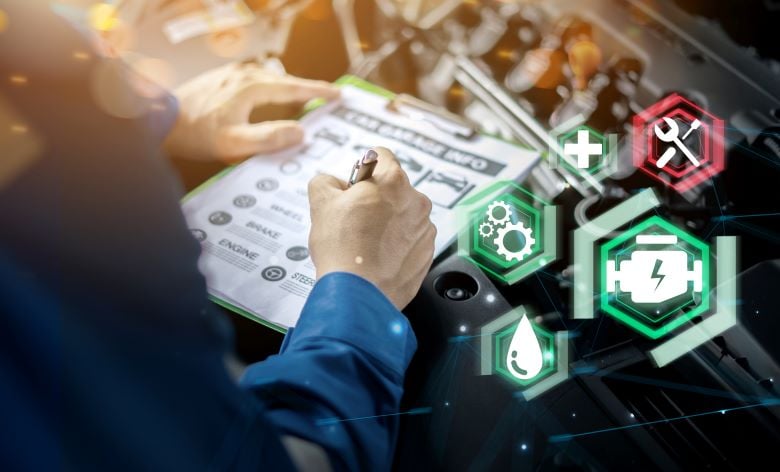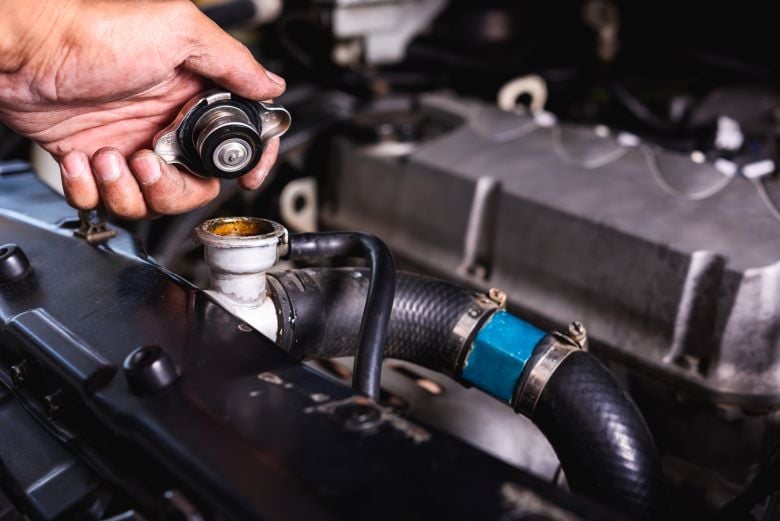
October Is Car Care Month! Here's How to Prepare Your Car for Fall
- Vehicle Maintenance
- PEAK
- October 2, 2024
Get prepped for the cold weather with these fall car care maintenance tips!
With Car Care Month in full swing, seasonal vehicle maintenance is a timely topic. Winter driving is hard on your car, and fall car maintenance is a great way to prep your ride for the cold weather.


Start with these standard car maintenance tips for fall:
- Check your fluids. Check your engine oil and the transmission, brake, and power steering fluids. Antifreeze is especially important during the cold weather — see below for in-depth coverage of this important topic.
- Inspect your wiper blades. You don't want to be stuck with old or underperforming wiper blades in blustery fall or winter weather. This complete guide to wiper blades explains when and how to change them. If it's time to replace yours, consider heavy-duty PEAK Max Vision or Snow Beast blades.
- Wash and wax your car. Fall and winter bring frost, snow, ice, and road salt — all of which can damage your vehicle's paint. After washing your car, wax it to form a powerful protective barrier against these cold-weather irritants.
- Inspect your lighting. Check your headlights (low and high beams), taillights, turn signals, and reverse lights, and replace any dim or burned-out bulbs. If you need new headlights, consult our complete headlight guide: it contains lots of useful information on how to choose lights that match your driving needs.
Test your battery. Summer stresses your battery, making a fall battery check extra important. Many auto retailers will test your battery for free, but you can also pick up an inexpensive testing kit to do it yourself. If your test reveals excessive wear, replace your worn-down battery promptly.


Auto care experts recommend that you perform many of these checks twice a year: once in spring and again in the fall. For more details on these checks — including step-by-step instructions for DIYers — consult our guide to spring auto maintenance.
Next, let's take a look at some of the car care and maintenance tasks that specifically belong on your fall maintenance checklist.
Check your antifreeze
As its name suggests, antifreeze prevents the water in your car's cooling system from freezing over in the winter. It also protects your vehicle against many different forms of engine wear.
It's easy to check your antifreeze levels. Under your hood, you'll find a special coolant reservoir. If you need help finding it, your vehicle's owner's manual will tell you where to look.
Your reservoir has two labels: F (full) and L (low). If you're running low, top off your antifreeze to the F line.
Before you pour any antifreeze or coolant into your car, make sure it's properly diluted. Most cars accept a 50/50 mix, but your owner's manual is your best source of information.
PEAK Auto's antifreeze and coolant lineup includes quality products for all makes and models, along with unique formulations for:
- Electric vehicles
- Traditional and plug-in hybrids
- North American, European, and Asian vehicles
- Heavy-duty performance
While you're at it, check your owner's manual to see how often your vehicle's manufacturer recommends a cooling system flush-and-drain. If you're due, have a technician take care of this important service, or follow our step-by-step guide to tackle the task yourself.
Switch to your winter tires
Winter tires are specially engineered to maintain better traction in snow, sleet, slush, and ice. They're a critical part of winterizing your vehicle and a must if you're among the 70% of U.S. drivers who live in snowy regions.
You'll need a technician to swap out your all-season tires for winter tires. Ahead of your appointment, you can check your winter tires for adequate tread depth and tire pressure. Our seasonal guide to spring car maintenance explains exactly how to perform both of these checks.
Test your brakes
Properly functioning brakes are important throughout the year, but they're especially critical in fall and winter when road conditions tend to be more slippery.
While it's best to have a pro test your brakes, you can perform an easy DIY check to screen for obvious problems. First, find a large, vacant parking lot or an empty stretch of flat, straight road. Then, accelerate to city speed (30–35 miles per hour).
Perform the check by applying steady, medium pressure on your brakes. Your car should decelerate smoothly, without any shaking, vibrations, or pulsing. If you detect anything unusual, take your car to your local service center and have your brakes checked out.
Lubricate your weatherstripping, door locks, and windows
Snow, sleet, and ice can wreak havoc on your car's weatherstripping, windows, and locks, but specialized lubricants can preempt problems.
Here's what you need:
- Weatherstripping: Coat your vehicle's weatherstripping and all door surfaces connected to it with silicone spray. Pro tip: spray the lubricant onto a clean rag, then use the rag to treat the surfaces. This will keep spray residue out of your vehicle's interior.
- Windows. Thin sheets of ice can sink down into your window tracks, putting added pressure and wear on your window regulator and other motorized components. This can potentially lead to a costly repair bill. Use sprayable silicone or a dry Teflon lubricant to protect your windows against ice.
With your car doors open, put your windows all the way down and spray the product into your window slots — that's the name for the gap your windows sink into when you lower them. Finish by putting all windows through three complete up-and-down cycles to make sure the lubricant coats the entire window track.
- Door locks. Spray a graphite-based or dry Teflon lubricant directly into your door locks. This is a good practice even if your car has keyless entry, as fobs sometimes fail and you could need to access your vehicle manually.
Even after lubricating your locks, it's never a bad idea to stash a supply of de-icer in your trunk. That way, you'll have a fall-back plan if you wake up to find your locks frozen over despite your best efforts.
Winterize your emergency kit
You should always have a fully stocked emergency kit in your car. We covered this topic in detail in our ultimate road trip checklist, which you can refer to for all-season essentials.
Double check your emergency supplies to make sure they include these must-haves for cold weather:
- Ice scraper, snow brush, and collapsible snow shovel
- Sand or kitty litter (for traction)
- De-icing solution
- Blankets, mittens, and winter hats
- Tire chains and towing strap
If you're headed out on a longer drive or a winter road trip, it's wise to add sleeping bags and extra winter boots to your kit to make sure you have all your bases covered.
Shop for your fall car maintenance checklist with PEAK Auto
Car Care Month is an important reminder about vehicle maintenance and how it helps you stay safe on the roads all year long. To that end, PEAK Auto offers a long list of high-quality automotive products to keep your car running strong until spring returns.
Browse our collection of efficient wiper blades, specially engineered antifreeze, and high-visibility headlights for dark fall and winter driving conditions. Finally, grab a jug of PEAK windshield wash — we carry a special De-Icer formulation with advanced anti-frost protection to help you maintain peak visibility throughout the fall and winter.
Happy driving!

